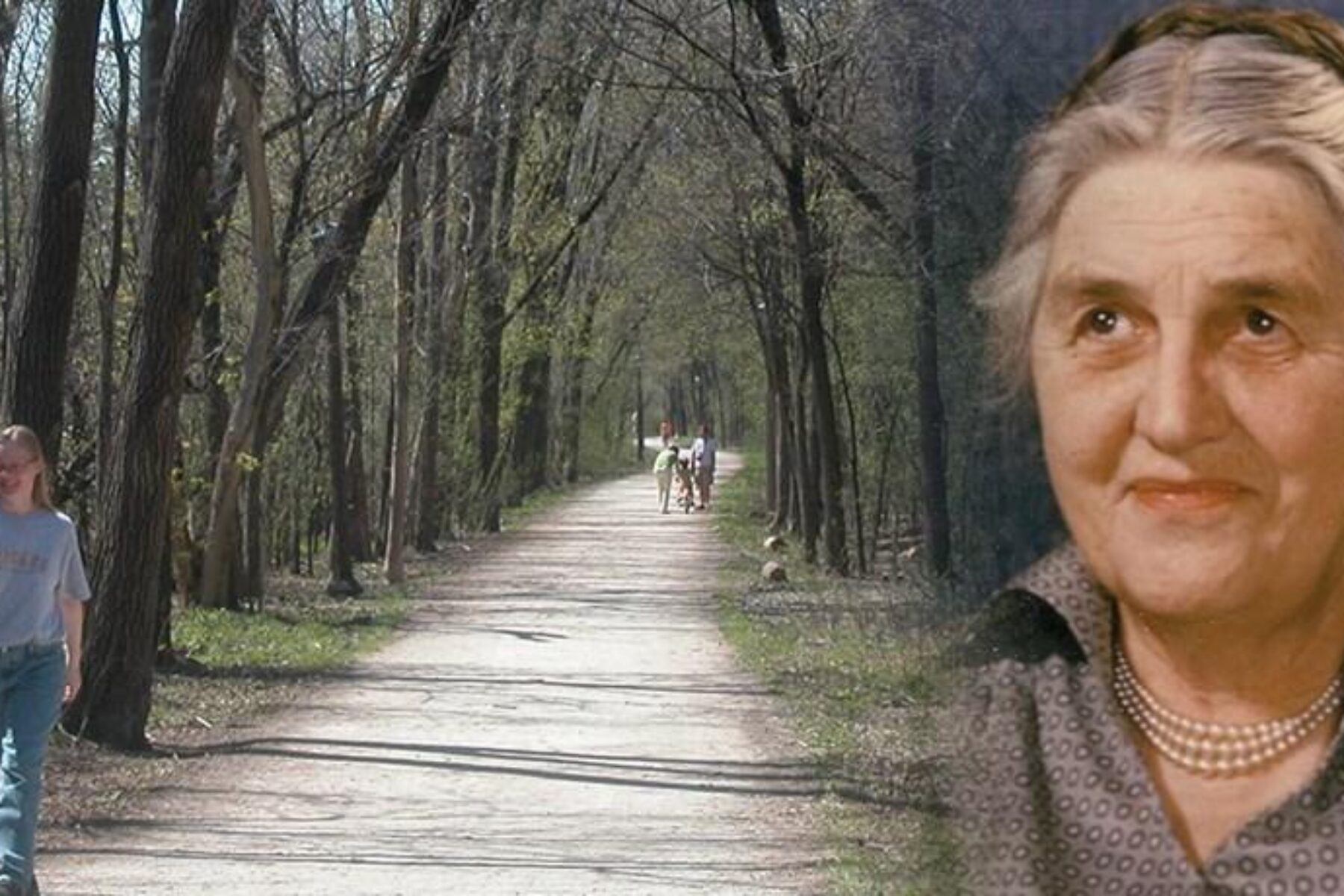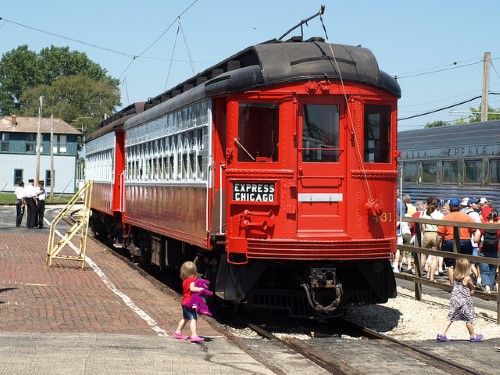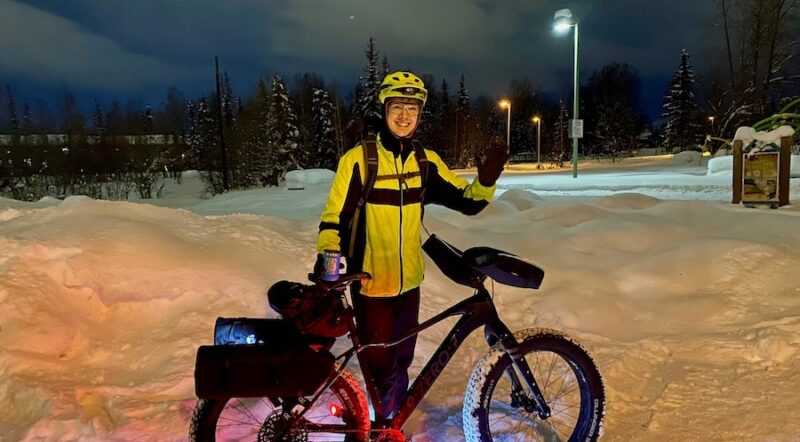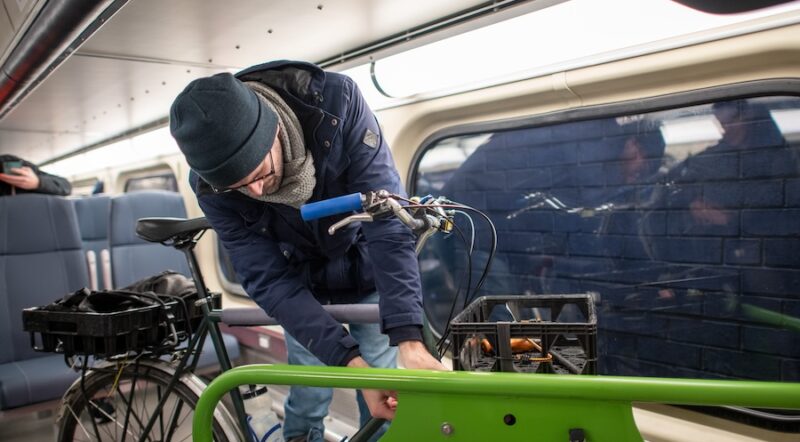How May T. Watts Inspired the Illinois Prairie Path and U.S. Rail-Trail Movement

May Theilgaard Watts (1893-1975) was a writer, illustrator, naturalist, scientist and teacher. Her determination that Americans stay connected to their natural landscape in a time of increasing urbanization was the catalyst that led to the formation of the Illinois Prairie Path, which was created in the 1960s and now forms a 61-mile web through the Chicago area.
Watts’ vision of recycling out-of-service rail lines for recreational use was far ahead of its time. Heralded as one of the first successful rail-trail conversions in the U.S. (along with the Elroy-Sparta State Trail in Wisconsin), the Prairie Path helped lay the blueprint for thousands of future rail-trails.
“Roarin’ Elgin”

The former rail line that makes up the Illinois Prairie Path—known in its heyday as the “Roarin Elgin” or “Great Third Rail”—originated in Elgin and Aurora, where small horse-powered streetcar lines began to pop up in the 1860s. Service branched out across the Fox River Valley, and by the 1890s, promoters were eyeing a direct, electrically operated route into Chicago.
In April 1901, two Ohio-based syndicates, Everett-Moore and Pomeroy-Madelbaum, combined forces, establishing the Aurora, Elgin & Chicago Railway (AE&C). By July 1902, the group had completed a line from Chicago to Elmhurst and Wheaton capable of reaching 65 miles per hour. Much of the property used third-rail electrical pickup via a 650-volt DC system, thus gaining its second nickname the Great Third Rail.
The line operated at high standards, but never developed much freight service and struggled with financial issues over the next six decades. In 1922, after experiencing bankruptcy, it re-emerged as the Chicago, Aurora & Elgin Railway (CA&E), and in 1925, it was acquired by electric railway tycoon Samuel Insull. The rail line continued to function until setbacks related to the construction of Chicago’s West Side freeway system hurt operations. In 1961, against strong public backlash, service was shut down entirely.
RELATED: 30 Years: Birth and Evolution of the American Rail-Trail Movement
Watts Writes a Letter
On Sept. 25, 1963, the Chicago Tribune published a letter to the editor from Watts about her vision to turn the old AE&C right-of-way into a rail-trail encapsulating the natural beauty of region.
“We are human beings,” wrote Watts. “We are able to walk upright on two feet. We need a footpath. Right now there is a chance for Chicago and its suburbs to have a footpath, a long one. The right-of-way of the Aurora electric road lies waiting. If we have courage and foresight, such as made possible the Long Trail in Vermont and the Appalachian Trail from Maine to Georgia, and the network of public footpaths in Britain, then we can create from this strip a proud resource.”
Her letter inspired an outpouring of public support, and within months, the nonprofit Illinois Prairie Path (IPP) corporation was formed. By 1967, the first trail signs had been posted.
Read Watts’ full letter on RTC’s Trail Champion Web page.
The Illinois Prairie Path was inducted into RTC’s Rail-Trail Hall of Fame in 2008. In 2011, RTC designated Watts a Doppelt Family Rail-Trail Champion, the highest honor given in the nation to individuals who have made significant contributions in the national rail-trail movement.

Donate
Everyone deserves access to safe ways to walk, bike, and be active outdoors.



